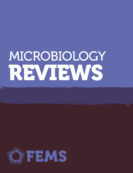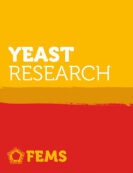Pathogens and Disease Poster Prize: Vera Carniello
Eurobiofilms (2017)
The 2017 congress on Eurobiofilms, held in Amsterdam, attracted an international community of 250 participants from over 30 different countries, meeting to discuss microbial biofilms research.
Pathogens and Disease presented a Poster Prize to Vera Carnello. Read an interview with Vera below.
Vera Carniello
What is your current position, and what was your scientific journey to get there?
I am a PhD student at the University Medical Center Groningen in The Netherlands and the focus of my research is on the initial stages of biofilm formation and on bacteria-biomaterials interaction.
Previously, I obtained a MSc degree in Biomedical Engineering at University of Padova, Italy, with a Master thesis on protein-biomaterials interaction, based on my work at the Royal Institute of Technology in Stockholm, Sweden.”
Could you describe the research your poster covered?
Biomaterial-associated infections are one of the major causes of medical implants failure. The fact that bacteria in a biofilm are much less susceptible to antibiotics than planktonic bacteria, together with the rapid development of multi-drug resistant strains, makes it necessary to understand the mechanisms of bacterial response to antibiotic treatment.
The scope of my research is to investigated the bacterial response to antibiotics in relation to cell wall deformation and surface adhesion. Using a fluorescence-based method and atomic-force-microscopy, I studied how antibiotics affect bacterial deformation, stiffness and bond between bacteria and biomaterial surface.”
What do you hope to focus your research on in the future?
I am fascinated by surface sensing. I find it amazing that bacteria, simple organisms having no eyes, no ears and no nose, can know that they are on a surface and produce a response to it. Last year I wrote a chapter for the book The Perfect Slime: Microbial Extracellular Polymeric Substances (EPS), H.-C. Flemming, T. R. Neu, and J. Wingender, Eds. IWA Publishing, 2016, where we reviewed the current knowledge on surface sensing.
Writing this chapter made me curious about how bacteria perceive the environment and the surface they adhere to, and I think that it is related to the cell wall, which separates bacteria from the environment and enables them to interact with their surroundings. ”
Any further comments?
It has been an extremely interesting experience to participate to the Eurobiofilms 2017 conference. In just three days, it provided me with a comprehensive overview of the diversity of biofilms and offered intriguing insights in the approaches to understand and fight them.”
All but one of the FEMS journals are now fully open access (OA), with one journal, FEMS Microbiology Letters remaining a subscription journal with free-to-publish and OA options. Open access is key to supporting the FEMS mission of disseminating high quality research as widely as possible: when high quality, peer reviewed sound science is open access, anyone, anywhere in the world with an internet connection, can read it.








